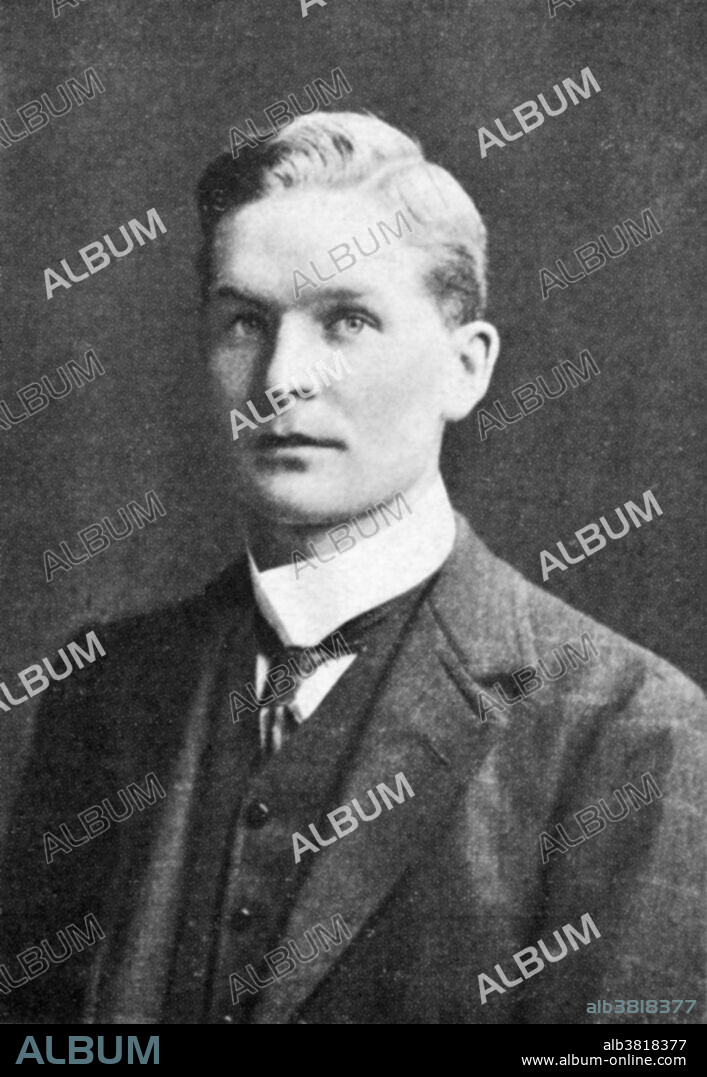alb3818377
Frederick Soddy, English Radiochemist

|
Add to another lightbox |
|
Add to another lightbox |



Buy this image.
Select the use:

Title:
Frederick Soddy, English Radiochemist
Caption:
Frederick Soddy (1877-1956) was an English radiochemist and monetary economist. In 1900 he became a demonstrator in chemistry at McGill University in Quebec, where he worked with Ernest Rutherford on radioactivity. When radioactivity was first discovered, no one was sure what the cause was. It needed careful work by Soddy and Rutherford to prove that atomic transmutation was in fact occurring. In 1903, Soddy verified that the decay of radium produced alpha particles composed of positively charged nuclei of helium. From 1904 to 1914, Soddy was a lecturer at the University of Glasgow and while there he showed that uranium decays to radium. It was here also that he showed that a radioactive element may have more than one atomic mass though the chemical properties are identical. He named this concept isotope. He received the 1921 Nobel Prize in chemistry for his research in radioactive decay and particularly for his formulation of the theory of isotopes. He died in 1956 at the age of 79. The lunar crater Soddy is named after him, as is the uranium compound Soddyite.
Category:
SCIENCE • black & white • Science: Personalities
Credit:
Album / Science Source / New York Public Library
Releases:
Image size:
2550 x 3692 px | 26.9 MB
Print size:
21.6 x 31.3 cm | 8.5 x 12.3 in (300 dpi)
Keywords:
1877 • 1900 • 1921 • 1956 • 20 20TH XX XXTH TWENTIETH CENTURY • 20 XX TWENTIETH CENTURY • 20TH CENTURY • 20TH • ATOMIC TRANSMUTATION • BLACK & WHITE • BW • CELEBRITIES • CELEBRITY • COINED THE TERM ISOTOPE • DECAY OF RADIUM PRODUCED ALPHA PARTICLES • ECONOMIST • ENGLISH • ERNEST RUTHERFORD • EUROPEA • EUROPEAN • EUROPEANS • F. SODDY • FAMOUS PEOPLE • FAMOUS • FIGURE • FREDERICK SODDY • HISTORIC • HISTORICAL • HISTORY • IMPORTANT • MALE • MAN • MEN • MONETARY ECONOMIST • NOBEL LAUREATE • NOBEL PRIZE LAUREATE • NOBEL PRIZE RECIPIENT • NOBEL PRIZE WINNER • NOBEL PRIZE • NOBEL RECIPIENT • NOBEL WINNER • NOBEL • NOBELIST • NOTABLE • PEOPLE • PERSON • PERSONALITIES • PERSONALITY • PHOTO • PHOTOGRAPH • PORTAIT • PORTRAIT • POTRAIT • RADIATION • RADIATIONS • RADIOACTIVE DECAY • RADIOACTIVITY • RADIOCHEMIST • RADIOCHEMISTRY • RESEARCH IN RADIOACTIVE DECAY • SAVANT • SCI • SCIENCE AND TECHNOLOGY WISSENSCHAFT SCI • SCIENCE • SCIENCE-TECHNOLOGY • SCIENCE: PERSONALITIES • SCIENCE_AND_TECHNOLOGY WISSENSCHAFT SCI • SCIENTIFIC • SCIENTIST • SODDY • SODDYITE • STUDIED RADIOACTIVITY • THEORY OF ISOTOPES • TWENTIETH CENTURY • URANIUM COMPOUND • WELL-KNOWN • WORKED WITH ERNEST RUTHERFORD • RADIATIONS


 Pinterest
Pinterest Twitter
Twitter Facebook
Facebook Copy link
Copy link Email
Email
